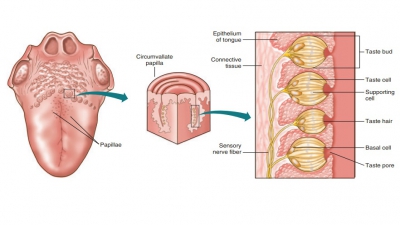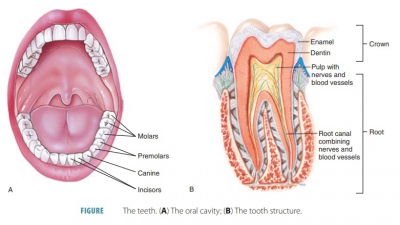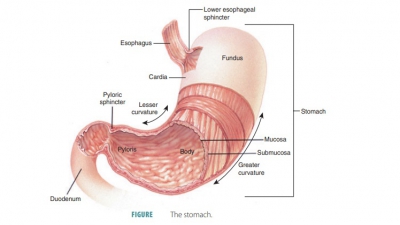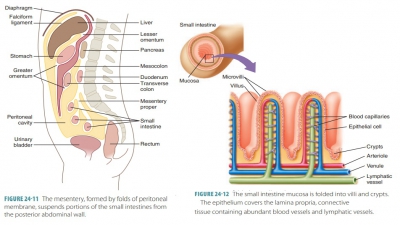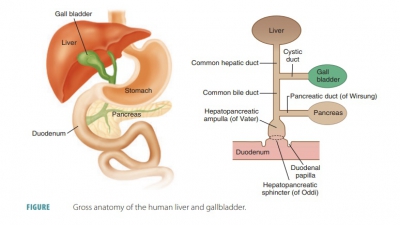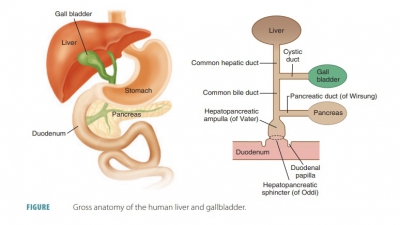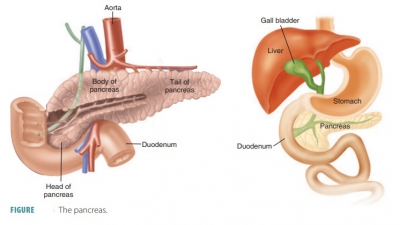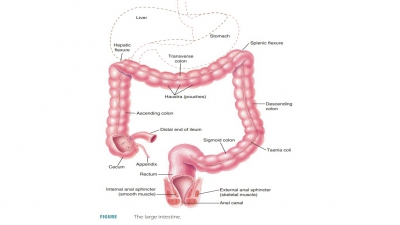Esophagus
| Home | | Anatomy and Physiology | | Anatomy and Physiology Health Education (APHE) |Chapter: Anatomy and Physiology for Health Professionals: Digestive System
The pharynx allows food, liquids, and air to pass through its cavity, which lies posterior to the mouth. From the pharynx, the tubular esophagus leads to the stomach.
Esophagus
The pharynx allows
food, liquids, and air to pass through its cavity, which lies posterior to the
mouth. From the pharynx, the tubular esophagus leads to the stomach. These
structures do not digest food but are important, in that their muscular walls
aid in swal-lowing. The pharynx is similar in its histology to the oral cavity.
Its mucosa contains a stratified squa-mous epithelium that resists friction and
has many mucous-producing glands.
The esophagus is a
hollow muscular tube, about 25 cm or 10 inches in length, with a diame-ter of
about 2 cm. Basically, a straight but collapsible tube, the main function of
the esophagus is to pass solid food and liquids to the stomach. Food passes
through the esophagus from the laryngopharynx to the stomach, descending
posteriorly to the trachea. The esophagus passes through the mediastinum,
penetrating the diaphragm through the esophageal hiatus,
and is continuous with the stomach on the abdominal side of the diaphragm. It
actually joins the stomach at the cardial
orifice, which is sur-rounded by the gastroesophageal or cardiac
sphincter. This sphincter is known by a third name, the lower esophageal
sphincter. It is formed by a thickening of circular smooth muscle fibers.
This sphincter prevents stomach contents from regurgitating
into the esophagus but temporarily relaxes to allow food to enter the stomach from
the esophagus. The esophagus is different from the mouth and pharynx in that
its wall has the same four basic layers as the rest of the alimentary canal: a
mucosa, submucosa, muscularis externa, and a fibrous adven-titia instead of a serosa. Throughout the submucosa of the esophagus, there are many mucous
glands that moisten and lubricate the inner lining of the tube.
Processes of Digestion
Most processes of digestion involve the mouth
and its accessory digestive organs. In the mouth, food is ingested, chewing
begins the mechanical breakdown of the food, swallowing initiates propulsion of
food, and polysaccharides begin to be digested. Nearly no absorption occurs in
the mouth, except for drugs such as nitroglycerine, which are
absorbed through the oral mucosa. The pharynx and esophagus only function as
conduits of food passage from the mouth to the stomach.
The process of chewing or mastication involves opening and closing the jaws and moving them from
side to side. The tongue moves food between the teeth, which grind and tear the
food. This process breaks food down into smaller fragments so it can be more
easily swallowed. The food is moved back and forth over the biting or occlusal surfaces. Mastication is a
voluntary and a reflexive process.
Swallowing or deglutition occurs in
three stages: chewing, physical swallowing, and peristalsis in the esophagus to
the stomach. In the voluntary stage,
the food is chewed and mixed with saliva, rolled into a mass or bolus by the
tongue, and forced into the phar-ynx. The tip of the tongue is placed against
the hard palate and tongue contraction is the movement that actually forces the
bolus into the oropharynx. This phase is also known as the buccal phase. Over 22 separate muscle groups are
used in swallowing.
The second stage of swallowing begins as food stimulates
sensory receptors, which trigger the swallow-ing reflex, momentarily inhibiting
breathing. It is invol-untary and known as the pharyngeal–esophageal phase. This phase is controlled by the swallowing center of
the medulla oblongata and lower pons.
The third stage of swallowing is peristalsis, as the food is
transported in the esophagus to the stom-ach. It only takes about eight seconds
for solid foods to pass from the oropharynx to the stomach. Because fluids are
assisted by gravity, they are passed within one to two seconds. Before the wave
of peristalsis reaches the end of the esophagus, the gastroesophageal sphincter
relaxes reflexively. This allows food to enter the stomach. The sphincter
closes after the food enters, which prevents regurgitation back into the
esophagus.

